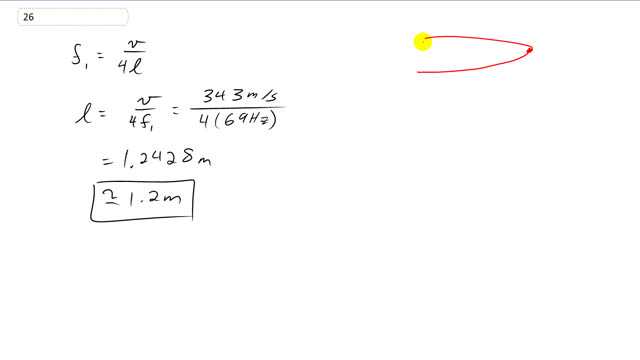
What would you estimate for the length of a bass clarinet, assuming that it is modeled as a closed tube and that the lowest note that it can play is a whose frequency is 69 Hz?

In order to watch this solution you need to have a subscription.
This is Giancoli Answers with Mr. Dychko. If a clarinet is a tube that's closed at one end which would be the case because, you know, at the mouthpiece or reed end of the clarinet there'd be a node there because it's closed, and the other end of the clarinet flares out like this and it's obviously open. So, and here's all the keys and so on. So, the clarinet is a tube closed at one end. So, the fundamental frequency is the speed of sound divided by 4 times its length. And then you can multiply both sides by l and divide both sides by f1, the fundamental. And on the left side you have l, on the right side there's f1 on the bottom. So, it's v over 4 f1, 343 meters per second divided by 4 times 69 hertz and that gives about 1.2 meters for its length.